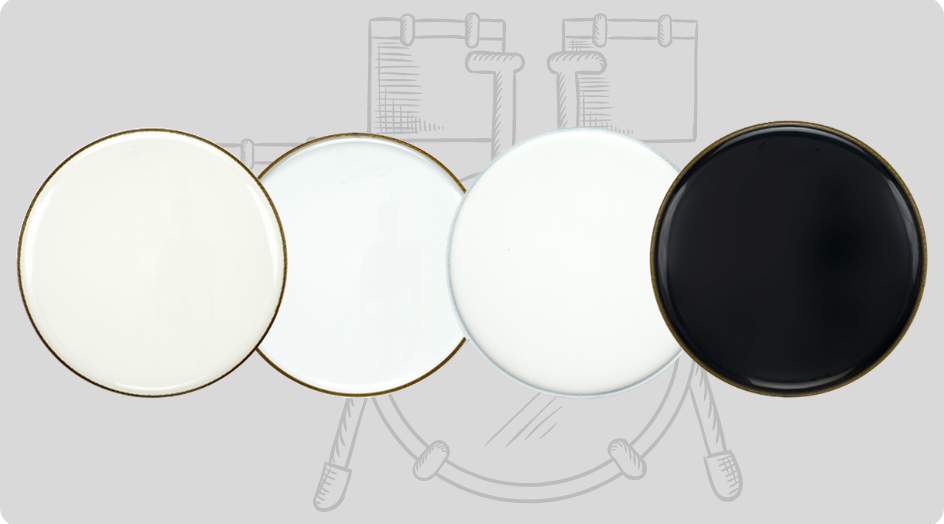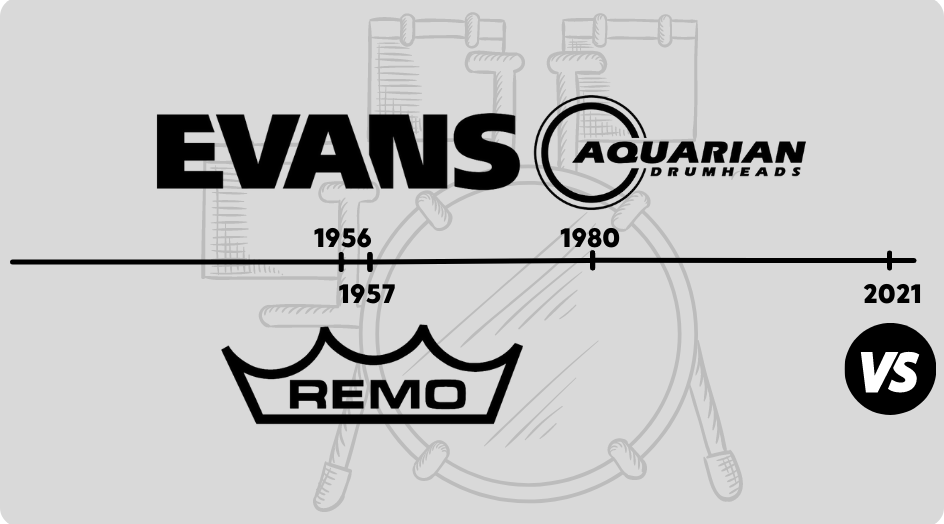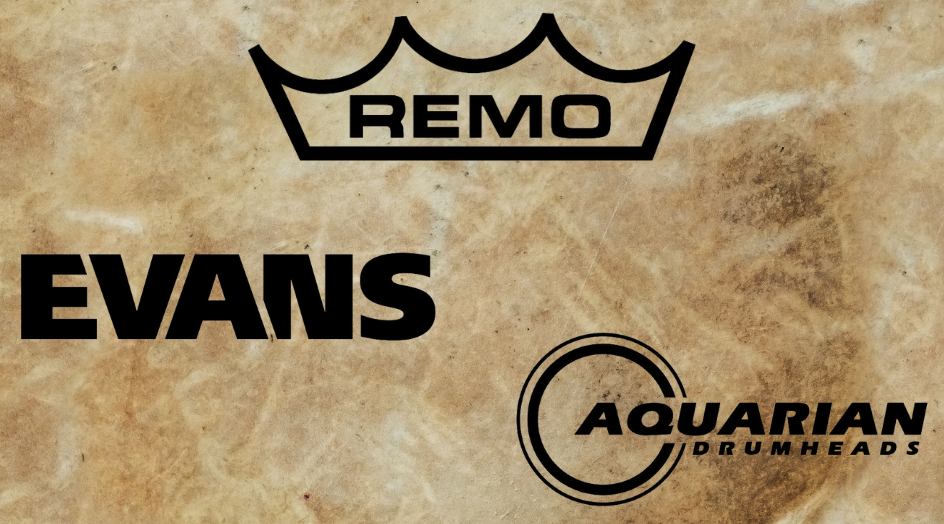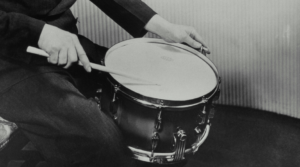When it comes to choosing the best drumhead for your drum set, the choice often comes down to three of the most popular manufacturers around. They are Remo, Evans, and Aquarian.
If you are a beginner, you might get overwhelmed since a lot of people have varying opinions for the three, and it’s difficult to make a decision on your own.
And another thing, if you are wondering why The Little Drummer Boy didn’t go to heaven, there’s no use for him over there because he sold his drumhead just like this guy right here:
Drum head from earlier’s show! It was sold for $400. (@MXS1N1STER’s pic) pic.twitter.com/G9Wmkl6ppO
— iDKHOW Tour Updates (@touridkhow) November 18, 2021
Hence, we scoured through half a dozen of threads and forums, such as Pearl and Drummerworld, to come up with a comprehensive comparison and condense all information you need into a single article.
I also relied on my experience as a former jazz drummer to come up with my personal preference that I believe will help you make a logical choice. These are:
- the sound,
- build,
- durability,
- playing characteristics,
And other additional information that I think is important.
In this article, we will pit the trio of drumhead manufacturers to help you make the best decision with Remo vs Evans vs Aquarian.
What Are Drum Heads?
In a much simpler world, “Drum heads” are just a group of people who are truly, deeply, madly in love with drums, similar to “Sneakerheads” and “Metal Heads.”
They’ll scour the globe for the best-sounding drums to play and listen to. They might even be more than interested in getting to know the best in the business like these guys right here.
Kidding aside, drum heads are the plastic surfaces that you can see on top and on the bottom of each drum.

You might have heard someone refer to them as drum skins, but we have since moved on from using literal animal skins on early drum sets that the latter term is no longer relevant.
Simply put, drum heads are the surface that drummers hit in order to produce sound. When a drummer hits them with the sticks, they will naturally vibrate as a response and the sound resonates throughout the drum.
Nowadays, manufacturers are using different kinds of plastics. Usually, something along the lines of mylar, polyester, or sometimes, even a combination of two or more plastics.
They are usually secured using a metal collar that will make sure that they fit nicely and tightly on the drum. Obviously, the top players in this market, which we are about to compare and contrast, are Remo, Aquarian, and Evans.
Brief History of Each Brand
Kicking off the Remo vs Evans vs Aquarian rumble would be nigh impossible without knowing a little bit of their background. Why? Because these three are the leaders of innovation in the drum industry and were some of the first to introduce radical changes years before. Protect and personalize with the coque iphone 13 pro transparente. Elevate your device with style and durability. Shop now for yours!

Remo has been around for more than 60 years already. That speaks for the quality of their products and the reputation that they’ve built.
The company’s founder, Remo Belli, is often credited with developing the first synthetic drumheads that found commercial success. After a long series of experimentation and testing, he finally discovered a method that works in early 1957 and has established his company by June of that year.
This only means that millions of animals were saved literally by the “skin” of their teeth starting that year thanks to Remo’s ingenuity.
Another contender for the first to come up with synthetic drumheads would be Chick Evans. The historic drummer and founder of Evans Drumheads has a solid argument about being the first to build a prototypical polyester-based drumhead back in 1956.
His design involved tacking a mylar film between hoops to form the drumhead. However, this was later discovered to be flawed and Remo Belli’s design was significantly better. In the end, the company was later acquired by D’Addario during the 90s and was a direct competitor of the Remo heads under D’Addario’s banner ever since.

As a company that came to the scene in the early 80s, Aquarian is relatively a newcomer when compared to the other Brands. Driven by his love for the warmer sound of natural drum skins, Roy Burns began looking for something similar sounding without using natural skin.
The result is the Aquarian Drumheads that we now know today.
Remo vs Evans vs Aquarian
Let’s start comparing the three brands based on characteristics such as sound, design, construction, durability, responsiveness, tuning, and feel.
Sound
When talking about sound, there seems to be a clear consensus among the drumming community about how each brand’s quality of sound.
One factor that should definitely affect your choice is the type of music you are planning to dedicate yourself to.

Evans’ sound can be described as bright, sharp, or even plasticky depending on the drum whereas Aquarian drumheads are said to have a warm, dark, and sometimes, slightly muddy, and right in the middle sits Remo.
Aquarian heads have a very warm tone that is often described as “whappy”. The tones are very clear and exactly follow what the drummers have in mind.
The Remos, however, are lighter than Aquarians but have a darker sound than Evans. The best description I can give is that their heads sound more open than the two.
I could go all day talking about how they sound but in the end, just like these guys in this forum, but we would all agree that it all comes down to personal taste and how you want your drum to sound. That’s why I highly recommend you to watch the video below to hear the difference side-by-side.
Design and Construction
All of the brands mentioned in this article use Mylar for all of their drumheads. Mylar is a type of stretched polyester that is known for its tensile strength and durability.
This type of plastic took over animal skin as the primary material used for drumheads. It is far more economical, versatile, and is easier to mass-produce. Accessories, such as mutes, are also easier to incorporate into this synthetic material than their natural counterpart.
Moreover, each company has its own way of affixing its Mylar heads into the drum set. These fasteners are called flesh hoops and widely affect the overall durability and strength.
This is a small yet important detail because it has been found out that this is where head failures commonly occur due to the pressure from the tuning lug.

First off, Aquarians spot welds the seam where the two ends of the flesh hoop meet. This provides for better reinforcement and longevity.
In contrast, Remo only resorts to crimping its flesh hoops which does a good job of securing the drumheads but is more likely to fail than welded flesh hoops.
Lastly, Evans uses flux soldering to fuse the two ends of the hoops together. While the bond is not on par with what welding does, it is still way better than crimping.
Durability
When talking about the durability of drumheads, there are a lot of factors to consider before any logical comparisons and conclusions could be drawn. These factors include the quality of Mylar provided by Du Pont, whether the heads are coated or not and whether the drum heads are single-ply or double-ply.
What’s the most important is that your drumheads should be able to handle cool stuff like this one:
Ok, guess what song I’m playing here!! (My shirt is an indirect hint…)
Gear: Pearl MLX drums @PearlDrumCorp @PearlDrumsEuro Sabian cymbals @SABIAN_Cymbals , Evans heads @EvansDrumheads , Ahead sticks @AheadDrumSticks pic.twitter.com/AXyGiMef7W— Mike Dupke (@MikeDupkeDrums) September 9, 2021
Based on my experience, Aquarian is the most durable compared to its competitors. It feels significantly thicker than the others and its coated heads visibly hold up better than Remo and Evans.
On the other hand, Remo’s heads are known to have brittle heads and some drummers swear to have seen or experienced having the coating literally fall off the drumheads. However, significant changes were made by the company and its heads are said to hold up better nowadays.
Lastly, Evans lay somewhere in the middle between Aquarian and Remo. Evans definitely makes better coatings than Remo but still comes up short when compared side by side with Aquarian.
Responsiveness, Tuning, and Feel
The good thing about these three brands is that they each cater to a distinct group of musicians that prefer their own thing, regarding sound and feel, as well as build and design. This choice tends to be a personal take from drummer to drummer, from each player’s own experience.

To proceed, Aquarians are known to have a stiffer feel when being played. This means to say that the stick doesn’t spring up as much and also takes a lot more effort to produce the sound that you want to get.
This may be caused directly by how the heads are produced and the materials used during the process. The upside of this is that Aquarian heads tend to be more durable and easier to tune. They can also hold their tone for a very long time compared to Evans and Remo.
On the other hand, Remo feels a little bit softer to play and has the most rebound among the three brands.
Finally, Evans strikes the right balance between these three aspects. Its heads boast spectacular qualities of being crisp and responsive. This means that exceptional drummers can easily bring out their musicality as Evans drumheads as they provide more control and dynamics.
But then again, this comes down to personal preferences among drummers. Even still, Evans drumheads are very easy to tune and comfortable to play with.
Speaking of tuning, here is a great article on how to prepare your drums if you plan on playing with a metal band.
Miscellaneous
Aside from the previous items mentioned above, there are plenty more aspects to consider when deciding which drumheads you should go for. Here are some of them.

One of the most common drawbacks about Remo is that their coated heads often leave behind a powdery residue after a long session of playing. This might be a clear sign of deterioration and speaks a lot about the quality of their coating.
So, if you don’t plan to replace your heads every few months, then it is better to steer clear of this brand.
Among the three, Evans should be the proudest for having the same, consistent build and quality. As proof, their heads can fit almost any vintage drum set in addition to the newer and more modern sets.
Lastly, Aquarian has the lowest hoop-to-head profile among the trio. What it means is that when the head is already affixed to the drum, the hoops are positioned to be higher than the head surface itself. As a result, it offers a whole new feel and angle of playing by a slight margin.
Summary
Now that we have come to this, allow me to condense all the information that was mentioned above.

Remo and Evans are undeniably the pioneers of synthetic drumheads. Both came to be during the 1950s and have been exemplary brands since then. The duo could also be considered to be staples in the drumming industry were it not for D’Addario’s acquisition of Evans in 1995.
Meanwhile, Aquarian is a relative newcomer to the scene, having been established back in 1980.
Here is a summary of each brand’s strengths as discussed in the article.
Remo – Good for advanced and experienced players
Evans – Best in responsiveness and dynamics
Aquarian – Most durable and warm sounding
Music is all about the aural experience and this video below will help you hear everything you’ve read up until this point.
Learn more
Conclusion
So, what came out on top of the Remo vs Evans vs Aquarian battle? Fortunately, this article really isn’t about what’s best. It’s all about what’s the best choice for YOU and you alone.
What I suggest is to try everything out and decide for yourself. Once you do that, make sure to come back and share your discovery with us through the comments below.





Ridiculous. I own a drum rental company and rent 200 sets a year to national artist s and have for 15 years. . I have e relationship with all 3 companies here and work directly with them. The ccommet Remo hoops are not as good becuase they are crimped or their coatings are not as good is hogwash. If soneone puts stage tape on an coated Evans head and pulls the tape back up the coating come off. They discolor and look dirty just sitting on a shop shelf. They dent easily . All 3 are good heads but Remo is truly superb. And the dark or bright comments depends on which ones. An Evsns G1 is closer to an Ambassador, G2 like an Emperor etc etc. If it’s 1 ply or 2 ply or coated or how thick etc are factors way past the company where the mylar was put on the rim
I’m wanting to replace my heads on my Tamastarclassics – Stewart Copeland model. Think I want coated. Loved the 1st Aquarians. Would those sound good? Love drummers like Jay Bellerose and Jerry Marotta. Still like rocking out to Puxies, too!!!!
You said it best in your conclusion this isn’t a good article for comparison. I’ve been a professional player for over 3 decades. I’ve had good experiences with all these manufacturers on different drums. The problem is its not cheap to experiment. Good heads and proper tuning mean the world. I can play a no name kit without a shell defect and produce a decent sound. While I appreciate your efforts you should preference this as an opinion. Unless Evans is paying you. Then just say it.